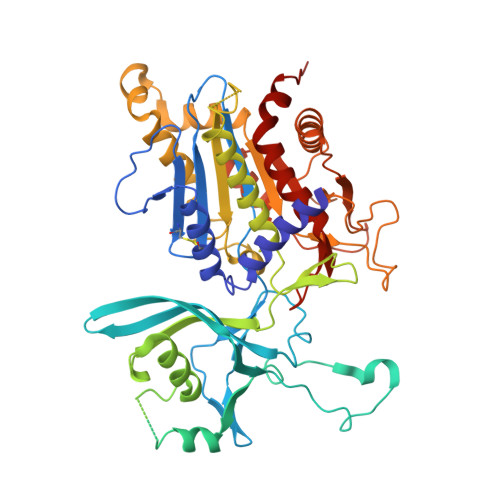Bottom-up structural proteomics: cryoEM of protein complexes enriched from the cellular milieu.
Ho, C.M., Li, X., Lai, M., Terwilliger, T.C., Beck, J.R., Wohlschlegel, J., Goldberg, D.E., Fitzpatrick, A.W.P., Zhou, Z.H.(2020) Nat Methods 17: 79-85
- PubMed: 31768063
- DOI: https://doi.org/10.1038/s41592-019-0637-y
- Primary Citation of Related Structures:
6PEV, 6PEW - PubMed Abstract:
X-ray crystallography often requires non-native constructs involving mutations or truncations, and is challenged by membrane proteins and large multicomponent complexes. We present here a bottom-up endogenous structural proteomics approach whereby near-atomic-resolution cryo electron microscopy (cryoEM) maps are reconstructed ab initio from unidentified protein complexes enriched directly from the endogenous cellular milieu, followed by identification and atomic modeling of the proteins. The proteins in each complex are identified using cryoID, a program we developed to identify proteins in ab initio cryoEM maps. As a proof of principle, we applied this approach to the malaria-causing parasite Plasmodium falciparum, an organism that has resisted conventional structural-biology approaches, to obtain atomic models of multiple protein complexes implicated in intraerythrocytic survival of the parasite. Our approach is broadly applicable for determining structures of undiscovered protein complexes enriched directly from endogenous sources.
Organizational Affiliation:
The Molecular Biology Institute, University of California, Los Angeles, CA, USA.















